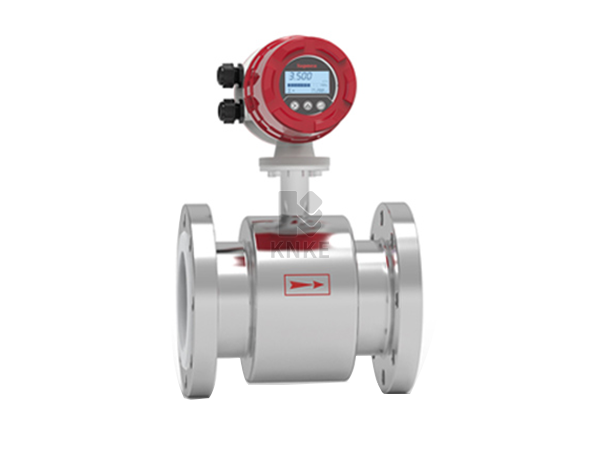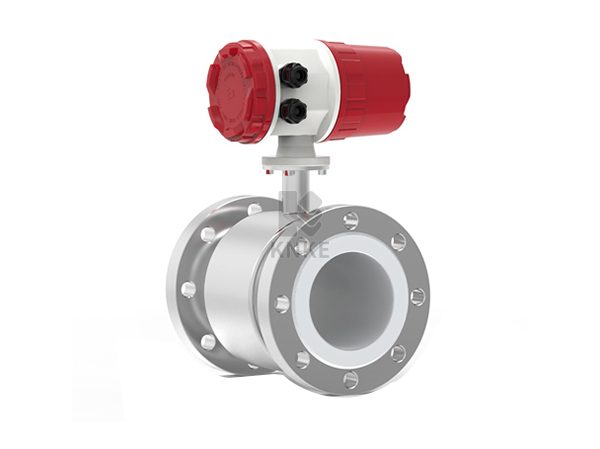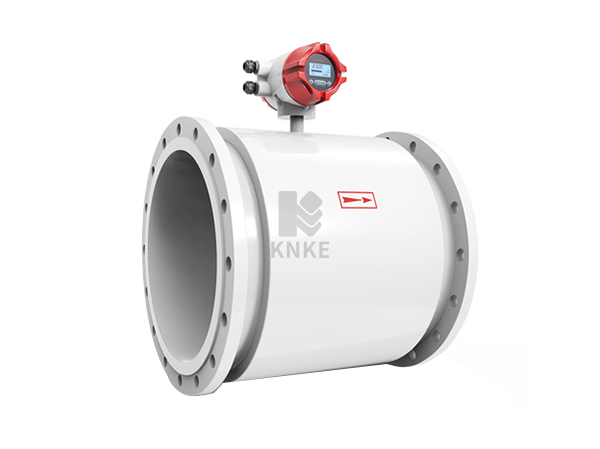Electromagnetic flowmeter
Electromagnetic flowmeter
KNKE electromagnetic flowmeter (EMF) is a type of flowmeter that measures the flow rate of a liquid or slurry in a pipe using the principle of electromagnetic induction. It is also known as a magmeter.
An EMF consists of a tube made of a non-conductive material, such as plastic or ceramic, which is lined with a conductive material, such as metal. Two electrodes are inserted into the tube, one at each end, and an alternating magnetic field is applied to the electrodes. When the conductive liquid flows through the tube, it generates a voltage across the electrodes, which is proportional to the velocity of the liquid.
The voltage signal is then converted into a flow rate by the EMF's electronics. EMFs are commonly used in industrial applications where the liquid being measured is conductive and where the flow rate needs to be measured accurately and reliably, such as in water treatment plants, chemical processing plants, and food and beverage production facilities. EMFs are also preferred in applications where the liquid being measured is dirty or contains solids that could clog other types of flowmeters.
An electromagnetic flowmeter is a device used to measure the flow rate of conductive fluids (liquids or gases) in a pipe or a conduit. It works on the principle of Faraday's law of electromagnetic induction, where an electrical conductor moving through a magnetic field will experience a voltage across its ends. The magnitude of this voltage is proportional to the velocity of the conductor, which in this case is the fluid.
The parameters of KNKE electromagnetic flowmeter that are commonly specified are:
- Flow rate range: The minimum and maximum flow rate that the flowmeter is capable of measuring accurately. This is typically specified in units of volume or mass per unit time, such as liters per minute or kilograms per hour.
- Pipe diameter range: The range of pipe diameters for which the flowmeter is designed. This is important because the performance of the flowmeter can be affected by the diameter of the pipe in which it is installed.
- Fluid conductivity: The flowmeter is designed to measure the flow of conductive fluids, so the conductivity of the fluid being measured is an important parameter. This is typically specified in units of Siemens per meter (S/m).
- Operating temperature range: The range of temperatures at which the flowmeter can operate reliably. This is important because the properties of the fluid being measured can change with temperature, which can affect the performance of the flowmeter.
- Accuracy: The accuracy of the flowmeter is typically specified as a percentage of the actual flow rate. This can vary depending on the manufacturer and the specific model of the flowmeter.
- Output signal: The flowmeter typically provides an electrical signal that can be used to measure the flow rate, such as a voltage or a current signal. The type of signal and the range of the signal are important parameters to consider when integrating the flowmeter into a larger measurement and control system.
- Power supply: The flowmeter requires an external power supply to operate, typically provided by a DC voltage source. The voltage range and power consumption of the flowmeter are important parameters to consider when selecting a power supply.
- Installation requirements: The installation requirements for the flowmeter can vary depending on the specific model and the application. Some flowmeters require a straight pipe section upstream and downstream of the flowmeter to ensure accurate measurements, while others may have different installation requirements.
- Materials of construction: The materials used in the construction of the flowmeter are important to consider, especially if the fluid being measured is corrosive or abrasive. The materials of construction can also affect the range of temperatures and pressures at which the flowmeter can operate.
Categories
Contact Us
Contact: KNKE INDUSTRY
Tel: 001-303-3276
E-mail: knke@usaknke.com
Add: 1600 Broadway suite 1600 denver co80202 united states


